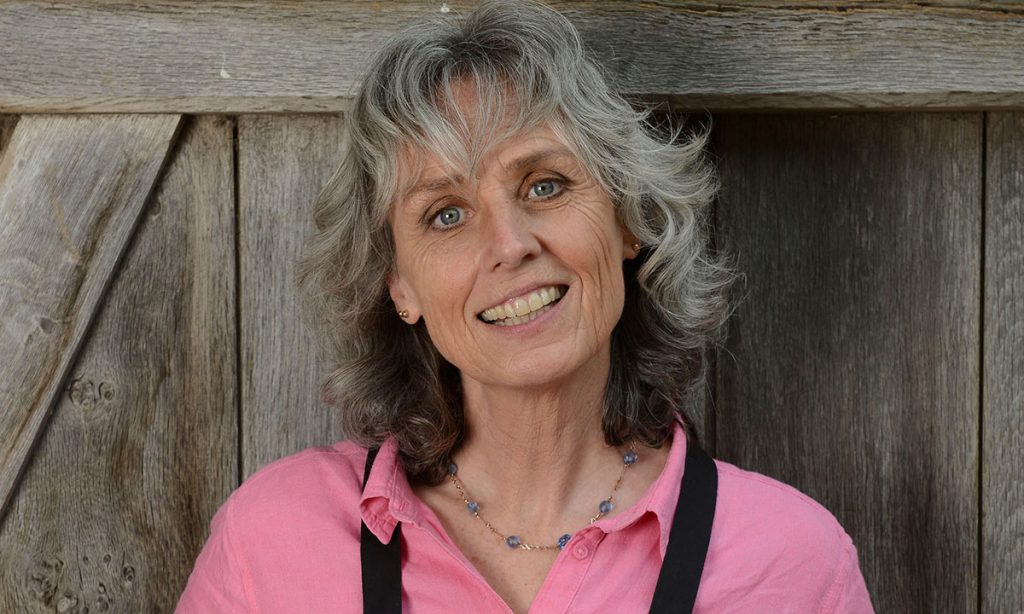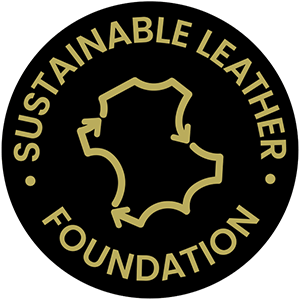In Conversation With Suzie Fletcher

With a career in leather that spans 47 years, Suzie Fletcher is passionate about all aspects of leather. SLF therefore felt privileged that Suzie agreed to support our work as a Patron and that’s where we kick off our conversation…

Deborah
Hi Suzie, can you tell us why you agreed to support the Foundation as our Patron?

Suzi
Hi Deborah, I feel very privileged to represent a foundation that is actively working to unite the world wide leather industry in an honest, transparent and traceable format.
In creating a level playing field, all who wish to become compliant with the spotlight focusing on but not limited to animal welfare, minimising environmental impacts, creating good working conditions that apply to their areas social requirements and producing good quality products, may do so.
I find this so refreshing and clearly a logical direction to follow if we wish to commit to fair trade in a holistic manner that benefits all and not just the chosen few.
The public are encouraged to access a well constructed and informative dashboard that answers the questions they have as well as those who work in the industry.
Simply put it’s a foundation built on ethics and accountability.

Deborah
Considering the breadth of experience you have had, both in the UK and in the US, what do you think is the biggest risk that the leather industry faces right now?

Suzi
There is a lot of misinformation and lack of understanding as to where leather comes from. How it’s made and the impact it has on the environment is often inaccurately reported. We are all learning and I feel it’s vitally important the doors of communication are opened and kept open to all. Listening to others as well as sharing our wealth of knowledge is the key to finding solutions. It’s about choices based on accurate information rather than one way or the other, there’s room for all points of view, just know the honest facts.

Deborah
And, on the flip side of the previous question, what do you consider is the leather industry’s biggest opportunity?

Suzi
If ever there was a time to help educate the public and share the truth on leather, it’s now. The focus has been on leather alternatives which is great and will always have a place in manufacture but at what cost? When I refer to cost I’m not merely talking money, I’m including the overall cost. Farming and animal welfare, biodiversity, environmental impacts, employment, manufacture, consumerism, fit for purpose and life expectancy with built-in biodegradability qualities are all to be considered as they all have a value. Starting with the farming cost of raising animals in a humane way, outside in the fresh air, eating foraged foods. This subject alone I could talk about until the cows come home, literally, but feel that’s one we shall speak more on at a later date.

Deborah
Can you tell us what your vision of a sustainable leather industry of the future is?

Suzi
The sustainability of the leather industry is without a doubt critical to the future of manufacturing products that will have a long, safe and unlimited life span. By its very nature leather is versatile with an unlimited variety of uses, is organic and has the ability to biodegrade when it’s no longer required. If damaged it can and is worth repairing, keeping it in a useable condition for future use. These few facts alone should be shared to those who wish to learn the true value of leather and how valuable it is in a socially and environmentally conscious world.

Deborah
Touching on your role as the resident leather expert on the BBC’s “The Repair Shop”, or perhaps even through your own repairs and saddle making business, what has been your favourite restoration or repair, and why?

Suzi
I’m really sorry but this is absolutely impossible for me to answer. Every item I repair or commission I commit to design and make comes with its own unique set of circumstances. The very fact leather can be repaired keeping an item in use is the ultimate goal when talking about sustainability and if it’s no longer required can return to the earth with little or no impact that it ever existed. Even with all the years in the trade and the huge variety of projects I’ve worked on I’m still fascinated by the resilient nature and uniqueness of leather.

Deborah
Finally, and very much in line with sustainability of products by ensuring longevity, what would be your biggest tip to ensure your leather product remains at its best?

Suzi
Look after it. 🙂 Keep in a temperate climate away from direct sunlight, heat source or damp. When buying a new leather item ask what the recommended care routine is, use the manufacturer’s product to clean and preserve if available. If it’s an item you’ve had for some time and you’re not sure what type of leather it is or how it’s been tanned/finished take it along to your local leather trades person who can offer advice based on these qualities. Every hide is unique and should be treated as such.
